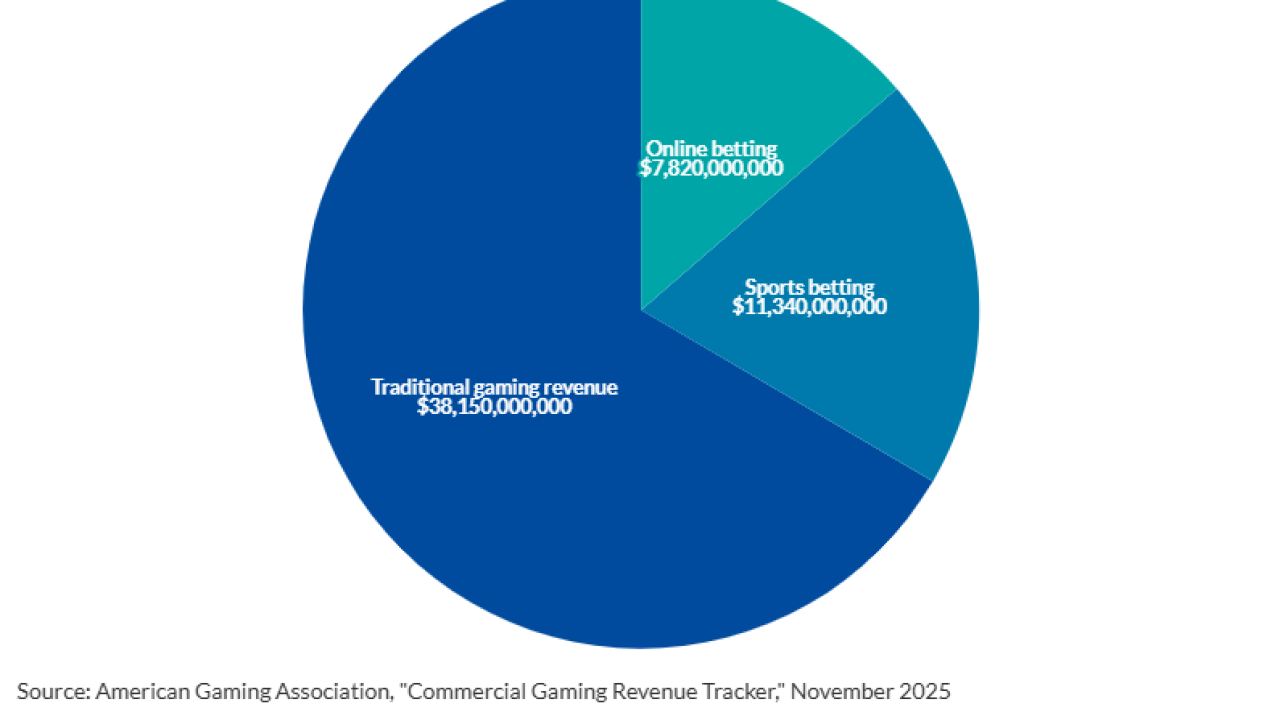Last tax season marked an increasing level of noncompliance by tax preparers with the Internal Revenue Service’s due diligence reporting requirements for the Earned Income Tax Credit, according to a new report reviewing the IRS’s performance during the delayed tax season.
The
In addition, TIGTA’s report raised concerns about the potential misuse of the split refund option to direct multiple tax refunds to the same bank account. TIGTA notified the IRS in February that some tax refunds were apparently directed incorrectly to tax preparers’ accounts.
As of May 2, 2013, taxpayers filed 385,591 tax returns with a Form 8888, Allocation of Refund (Including Savings Bond Purchases), requesting multiple direct deposits to the same bank account. Direct deposits totaling more than $150.8 million were made to 46,897 bank accounts.
Each of the 46,897 bank accounts identified by TIGTA had three or more Form 8888 deposits from different taxpayers into these accounts. TIGTA determined that 248,027 (64 percent) of the 385,591 tax returns were prepared by a paid tax preparer.
The IRS reported that it identified 579,183 tax returns with $3.6 billion claimed in fraudulent refunds during tax return processing and prevented the issuance of $3.47 billion (96.4 percent) of those refunds.
“The IRS is continuing to expand its efforts to identify and prevent fraudulent tax returns from being processed,” Treasury Inspector General J. Russell George said in a statement Wednesday.
IRS Response
Peggy Bogadi, commissioner of the IRS’s Wage and Investment Division, pointed out in response to the TIGTA report that the IRS has expanded its efforts to reduce the payment of erroneous claims for the Earned Income Tax Credit. “Final regulations addressing the requirement for paid tax return preparers to include Form 8867, Paid Preparer's Earned Income Credit Checklist, with returns claiming EITC, were issued in late December 2011,” she wrote. “The IRS quickly expanded its outreach program to educate the practitioner community. The outreach activities included specifically notifying 5,000 EITC preparers who had not included Form 8867 with the tax year 2011 returns they prepared. We also worked with the software development community to ensure the Form 8867 was available for tax year 2012 return preparation software products. Despite these efforts, systemic issues were discovered that caused Form 8867 to appear incomplete or missing from some software products. We worked with the software vendors to resolve the problem; however, the data set for those tax year 2012 returns whose paid preparers may be subject to the due diligence penalty does not have an accuracy level sufficient for the IRS to assert the penalty without additional analysis.”
The IRS’s own in-process review of tax returns that met its penalty criteria found that 65,749 returns, prepared by 2,474 paid return preparers, claiming $151.6 million worth of Earned Income Tax Credits, had no Form 8867 attached to the return, Bogadi noted. “This is significantly less than the 158,348 returns, prepared by 52,826 preparers, claiming $362 million of EITC, as reported by the Treasury Inspector General for Tax Administration,” she added. “Consequently, we do not agree with the associated outcome measure of $354 million, as it is overstated. When our analysis is completed, we will pursue penalty assertion for those previously noncompliant return preparers who were notified of the due diligence requirements. With the resolution of technical issues affecting the penalty administration, we are prepared to fully enforce the due diligence provisions in the upcoming 2014 filing season.”
In addition, TIGTA identified 42,961 questionable education tax credits totaling $58.5 million and $2.6 million in questionable Plug-in Electronic Drive Motor Vehicle Credits issued by the IRS as of May 2.
However, Bogadi differed with TIGTA’s assessment of the level of dubious education tax credits.
“We also disagree with the $37.7 million outcome measure associated with the American Opportunity Tax Credit and the $20.7 million outcome measure associated with the Lifetime Learning Credit claimed for tax year 2012 by students who are of an age at which they are unlikely to be enrolled in a four-year college or vocational program,” she wrote. “The law providing the education credits and defining student eligibility does not establish minimum ages, maximum ages, or likely ages at which students may qualify for the credits. While student age is one attribute to be considered when evaluating the potential for an erroneous or fraudulent claim, it cannot be the sole determinant. Establishing a likely age for pursuing post-secondary education is subjective. The IRS does consider the age of students, along with other criteria, as part of a comprehensive screening process to evaluate the fraud potential of the entire return and to stop those refunds from being issued when additional scrutiny is deemed necessary. The student age is also considered in a post-processing environment when returns are scored for audit potential. The macro-level data analysis performed by the TIGTA did not take the next step of contacting taxpayers to ascertain facts and circumstances, and determine whether their credit claims were legitimate or not.”
Delays in Filing Season
The Internal Revenue Service is delaying the start of tax season again next year until January 31, following a similar delay last year prompted by the last-minute fiscal cliff deal that led to extensive delays in tax refunds.
Last year, on Jan. 8, 2013, the IRS announced it was delaying the start of the filing season by one week to make the changes necessary to implement provisions of the American Taxpayer Relief Act, which became law on Jan. 2, 2013. However, some taxpayers were further delayed because several tax forms required more extensive programming changes.
On Wednesday, the IRS announced it would again delay tax season, this time until January 31, because of the government shutdown in October (see
TIGTA’s review of the IRS’s performance during the 2013 filing season found that as of May 4, 2013, the IRS received approximately 133.6 million tax returns, down from 134.6 million returns filed during the same period in 2012. More than 113.5 million (nearly 85 percent) of the returns were filed electronically, up from nearly 111.8 million e-filed in 2012.
TIGTA also found that the IRS issued more than 99.5 million refunds totaling more than $264 billion, compared to nearly 101.2 million refunds totaling more than $274 billion in 2012. The average refund decreased slightly to $2,656 in 2013, compared with $2,708 during the same period last year.
“Despite the delays, the IRS timely processed the majority of tax returns, and tax refunds were issued within 45 days of the April 15 tax return due date,” said TIGTA’s J. Russell George.
TIGTA found that as of May 4, 2013, the IRS received approximately 133.6 million tax returns, down from 134.6 million returns filed during the same period in 2012. More than 113.5 million (nearly 85 percent) of the returns were filed electronically, up from nearly 111.8 million e-filed in 2012. TIGTA also found that the IRS issued more than 99.5 million refunds totaling more than $264 billion, compared to nearly 101.2 million refunds totaling more than $274 billion in 2012. The average refund decreased slightly to $2,656 in 2013, compared with $2,708 during the same period last year.
“Despite tax legislation enacted on January 2, 2013, we programmed and tested our return processing systems within an extremely compressed timeframe and opened the filing season for most taxpayers only one week later than originally planned,” said Bogadi. “Once we were able to accept and process returns, the actual processing time and length of time for taxpayers to receive their refunds remained within our target timeframes. Most taxpayers received their refunds within 21 days or less from the time their returns were filed.”
Bogadi also noted that the IRS successfully used the Modernized e-File system as our sole platform for processing electronic returns. As of Aug. 23, 2013, the IRS had received more than 117 million electronic individual income tax returns and achieved an e-file rate in excess of 84 percent.
“We have also experienced gains in our ability to detect and stop fraudulent tax returns before they are processed,” Bogadi wrote. “By proactively identifying and flagging the accounts of individuals most vulnerable to identity theft, and by substantially expanding our fraud detection processes, more fraudulent returns are being removed from the processing system. This results in better protection for potential victims and a reduction of the risks and costs borne by the IRS.”
IRS Customer Service
TIGTA noted that customer self-service options expanded last tax season. The IRS offered a number of different options for taxpayers to seek information and assistance, and more taxpayers are using self-assistance customer service options. As of May 4, the IRS reported a 24.7 percent increase in the number of visits to IRS.gov over the same period in the 2012 filing season and a 55.6 increase in the number of taxpayers obtaining their refund information online from the “Where’s My Refund” feature found on IRS.gov. However, the “Where’s My Refund” tool did not always provide accurate refund status information early in the filing season.
The report pointed to a declining level of customer service at the IRS’s Taxpayer Assistance Centers around the country as the agency contends with budget cuts. The IRS assisted approximately 6.8 million taxpayers during FY 2012 and planned to assist six million taxpayers in FY 2013, a projected 11.8 percent decline.
However, TIGTA did see some improvement in the level of service that the IRS provides for toll-free telephone assistance. The IRS reported answering 15.6 million calls from taxpayers on its toll-free assistance lines through May 4, up from the 14.6 million calls answered in 2012. The level of service was 69.8 percent in 2013, compared with 67.8 percent in 2012.
TIGTA made eight recommendations to the IRS, including: improving the identification of questionable claims for education credits and Plug-In Electric Motor Vehicle credits.In addition, TIGTA recommended that the IRS initiate programs to recover the erroneous and questionable credits TIGTA identified and to ensure that EITC due diligence requirements are assessed when appropriate.
The IRS agreed with seven of TIGTA’s recommendations and partially agreed with one recommendation. The IRS plans to continue to evaluate its processes to identify questionable education credit claims. It also plans to establish processes to improve the identification of questionable Qualified Plug-In Electric Drive Motor Vehicle Credit claims, reduce errors associated with the processing of Homebuyer Credit repayments and dispositions, and assess Earned Income Tax Credit due diligence penalties. In addition, the IRS intends to assess the feasibility of recovering the erroneous and questionable credits TIGTA identified.





